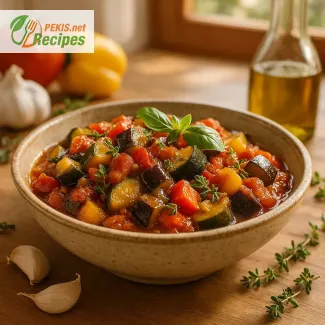
Creamy pumpkin soup stands as a comforting, warm, and nourishing delight that suits cold, cozy days perfectly. This hearty dish transforms the humble pumpkin into a silky, rich soup that embraces the senses, offering both comfort and nourishment. The smooth, velvety texture coupled with the earthy sweetness of pumpkin creates a balance that satisfies on even the chilliest evenings, making creamy pumpkin soup a quintessential autumn and winter treat. Let’s explore the uses of this beloved dish and the various types and styles that elevate it to an elegant yet approachable favorite.
The Uses of Creamy Pumpkin Soup
Creamy pumpkin soup isn’t just a starter; it’s a versatile dish with a range of uses and applications. From a warming lunch option to a heartwarming appetizer at elegant dinner parties, creamy pumpkin soup adapts to fit any occasion. When served in small cups, it can be a sophisticated amuse-bouche, introducing a meal with a hint of cozy warmth. In larger bowls, it serves as a filling and satisfying main course, especially when paired with fresh, warm bread. Additionally, this soup can be topped with a variety of garnishes such as roasted seeds, a drizzle of cream, or a sprinkle of herbs, allowing for artistic expression and added flavor.
For a nutritious lunch, creamy pumpkin soup pairs well with a fresh salad, making it a balanced meal that’s both filling and packed with vitamins. For those who prioritize health and well-being, pumpkin is an excellent source of vitamin A, antioxidants, and fiber, making it ideal for immune support and digestion during colder months. Beyond traditional meals, pumpkin soup is also excellent for preparing in larger batches and storing for quick meals throughout the week. When refrigerated or frozen, the soup retains its creamy texture and can easily be reheated, saving time without sacrificing quality.
Types of Creamy Pumpkin Soup
Creamy pumpkin soup is as varied as it is loved, with versions from different cultures and culinary traditions adding unique twists to this classic dish. Here’s a look at some of the popular types of creamy pumpkin soup and the flavors they incorporate:
- Classic Creamy Pumpkin Soup
- The classic version features pumpkin purée, cream, and aromatic spices. This base allows the pumpkin’s natural sweetness to shine while achieving a velvety texture through the addition of cream. Common spices include nutmeg and cinnamon, which enhance the natural warmth of the soup, making it an essential comfort dish.
- Spicy Thai-Inspired Pumpkin Soup
- Adding a Thai twist to pumpkin soup, this variation uses ingredients like coconut milk, ginger, and Thai red curry paste. Coconut milk replaces cream, lending a subtle sweetness and making it ideal for those who prefer dairy-free options. The addition of lemongrass or lime adds a refreshing edge, balancing the rich flavor with a touch of acidity, creating a soup that’s both exotic and deeply satisfying.
- Roasted Pumpkin and Garlic Soup
- For a smokier, more robust flavor, roasted pumpkin and garlic soup adds a caramelized depth. Roasting the pumpkin first enhances its natural sugars, resulting in a sweet, rich flavor profile. Garlic, either roasted or sautéed, adds a layer of savory warmth that complements the pumpkin’s sweetness. This soup is often garnished with roasted pumpkin seeds or a dollop of crème fraîche for extra richness.
- Indian-Style Pumpkin Soup
- Infused with spices like cumin, coriander, turmeric, and garam masala, the Indian-inspired pumpkin soup is aromatic and vibrant. This version introduces a balance between spicy and earthy flavors, perfect for those seeking an adventurous twist. A touch of coconut milk or yogurt adds creaminess, while fresh cilantro or mint can provide a refreshing finish. This version pairs beautifully with naan or rice for a more substantial meal.
- Pumpkin and Carrot Soup
- Adding carrots to pumpkin soup not only enhances the color but also adds sweetness and additional nutrients. Carrot blends smoothly with pumpkin, creating a harmonious balance between the two vegetables. A splash of orange juice or zest can elevate this version by adding a touch of brightness, making it an excellent choice for daytime meals when a lighter, refreshing soup is desired.
- Pumpkin and Apple Soup
- Blending pumpkin with apples introduces a subtle tartness, balancing the natural sweetness of the pumpkin. This type of creamy pumpkin soup is often spiced with cloves, cinnamon, and a hint of maple syrup or honey, creating a comforting and mildly sweet soup with layers of flavor. This version is especially fitting for festive gatherings, as it combines the essence of fall in each spoonful.
- Pumpkin and Sage Soup
- For a more herbaceous version, pumpkin and sage soup offers a savory and aromatic experience. Fresh sage leaves are often sautéed in butter and blended into the soup, creating a distinct, earthy undertone that complements pumpkin beautifully. This combination is commonly finished with a swirl of cream or butter, adding richness and depth, making it ideal for special occasions or holiday feasts.
Key Ingredients and Tips for Perfect Creamy Pumpkin Soup
While each type of pumpkin soup has its own unique ingredients, a few key elements make this soup particularly creamy, flavorful, and enjoyable.
- High-Quality Pumpkin: Opt for sugar pumpkins or other varieties known for their sweetness and texture. Avoid overly large pumpkins, as these can be more watery and less flavorful.
- Cream or Coconut Milk: The addition of cream, coconut milk, or even almond milk brings the smooth, creamy texture that makes this soup so comforting. Each choice can alter the flavor slightly, with coconut milk adding a touch of sweetness and nutty aroma.
- Aromatic Spices: Spices like nutmeg, cinnamon, ginger, and cloves are popular additions, adding warmth and depth. Fresh herbs like thyme, sage, or rosemary can also enhance the earthy flavor profile.
- Garnishes: Roasted pumpkin seeds, a drizzle of olive oil, or a sprinkle of fresh herbs elevate the presentation and flavor. Additionally, a small splash of balsamic vinegar or a dash of hot sauce can add depth and contrast to the soup’s sweetness.
Why Creamy Pumpkin Soup Is the Best Choice for Cold Days
Creamy pumpkin soup is more than a seasonal dish; it’s a remedy for the soul during cold days. Its warmth brings comfort, while its nutrient density provides essential vitamins and antioxidants. The bright, vibrant color alone can uplift the spirit on a gray day, creating a sense of well-being even before the first spoonful. The versatility of creamy pumpkin soup also makes it easy to tailor for various dietary preferences and tastes. Whether enjoyed as a quick, nourishing meal or as a slow, indulgent treat, this soup’s creamy texture and delicate flavors encapsulate the essence of autumn and winter.
Creamy pumpkin soup is the perfect choice for cold days. It’s warm, nutritious, and deeply satisfying, with an array of styles that cater to every palate. Each type brings a unique twist, offering endless possibilities to enjoy this comforting dish in new and delicious ways.
Step-by-Step Instructions
- Prepare the Ingredients
Peel and cube the pumpkin, dice the carrot, chop the onion, and mince the garlic cloves. - Sauté the Vegetables
In a large pot, heat the olive oil over medium heat. Add the chopped onion and cook for 2-3 minutes until it becomes translucent. Add the minced garlic and cook for an additional 1 minute, stirring to avoid burning. - Add the Pumpkin and Carrot
Add the cubed pumpkin and diced carrot to the pot. Stir to coat them with oil, then cook for another 5 minutes, allowing the vegetables to soften slightly. - Season the Vegetables
Add salt, black pepper, and nutmeg to the mixture. Stir well to combine and enhance the flavor of the pumpkin. - Pour in the Vegetable Broth
Add the vegetable broth, covering the pumpkin and carrot. Bring the mixture to a gentle boil, then reduce the heat to low. Cover the pot and simmer for 20 minutes, or until the pumpkin and carrot are tender. - Blend the Soup
Use an immersion blender to puree the soup directly in the pot until it reaches a smooth and creamy consistency. Alternatively, transfer the soup in batches to a countertop blender and blend until smooth. - Add the Cream
Pour in the cream (or coconut milk for a dairy-free option), stirring well to incorporate it evenly. Heat the soup gently for an additional 2-3 minutes but avoid bringing it to a boil to prevent curdling. - Taste and Adjust Seasoning
Taste the soup and adjust the seasoning as needed. Add more salt or pepper if desired. - Serve
Ladle the soup into bowls and garnish with fresh herbs like parsley or thyme. Optionally, drizzle a few drops of pumpkin seed oil on top for added richness and visual appeal.
Health Benefits and Nutritional Impact of Creamy Pumpkin Soup
Creamy pumpkin soup is more than a delicious, comforting dish for colder months; it is a nutrient-packed meal that delivers several vital vitamins, minerals, and dietary benefits. Each ingredient in this soup contributes to a holistic health profile, supporting everything from immunity to heart health. Let’s break down the impact of the key ingredients and their nutritional values to understand how they nourish the body.
Pumpkin: A Powerhouse of Vitamins and Fiber
Pumpkin is the star ingredient in creamy pumpkin soup, providing a high concentration of vitamin A in the form of beta-carotene, a powerful antioxidant. Vitamin A is essential for vision health, skin integrity, and immune function. Beta-carotene helps neutralize free radicals in the body, which can reduce the risk of certain chronic diseases and slow down signs of aging. One serving of pumpkin can meet over 200% of the daily recommended intake of vitamin A, making it an exceptional choice for bolstering immunity, especially during the colder months.
Additionally, pumpkin contains vitamin C, which supports immune function, enhances collagen production, and improves skin health. The fiber content in pumpkin is also noteworthy, aiding digestion and supporting a healthy gut by promoting regularity. Fiber is beneficial for maintaining stable blood sugar levels and can improve satiety, making this soup filling and satisfying.
Carrot: Antioxidant-Rich and Immune-Supportive
Carrots add both flavor and color to the soup, along with a significant nutrient boost. Similar to pumpkin, carrots are rich in beta-carotene, providing additional vitamin A that enhances the immune system, strengthens skin health, and supports good eyesight. The antioxidants in carrots, like lutein and zeaxanthin, are particularly beneficial for eye health, helping protect against macular degeneration.
Carrots also contribute to fiber intake, supporting digestion and helping manage cholesterol levels by reducing the absorption of LDL cholesterol. They contain a modest amount of potassium, which helps regulate blood pressure, contributing to overall cardiovascular health.
Onion and Garlic: Heart and Immune Health Allies
Onions and garlic are well-known for their antimicrobial and anti-inflammatory properties, making them ideal for supporting immune health. These ingredients contain allicin, a compound that is especially powerful in garlic, known to boost the immune system and help the body combat colds and infections. Regular consumption of garlic and onions is also associated with a reduced risk of heart disease due to their ability to lower blood pressure, reduce cholesterol levels, and improve circulation.
Garlic and onions also support digestive health, as they contain prebiotic fibers that feed beneficial gut bacteria. A balanced gut microbiome supports the immune system, enhances digestion, and may even improve mood and mental health.
Olive Oil: Healthy Fats for Heart Health
Olive oil is an excellent source of monounsaturated fats, which are beneficial for heart health. These fats help lower LDL (bad) cholesterol while maintaining HDL (good) cholesterol levels, thus supporting a balanced lipid profile and reducing the risk of cardiovascular disease. Olive oil also contains vitamin E, an antioxidant that protects the body’s cells from oxidative damage, supporting skin health and reducing inflammation.
Olive oil’s high content of oleic acid has been shown to reduce inflammation in the body, benefiting those with inflammatory conditions. Including a moderate amount of olive oil in the diet has been linked to lower incidences of heart disease and improved blood vessel function.
Vegetable Broth: Hydration and Essential Minerals
Vegetable broth is a base that provides a light and flavorful foundation to the soup. It is hydrating and contains essential minerals like potassium, calcium, and magnesium, which are key for maintaining electrolyte balance and supporting muscle and nerve function. Potassium is particularly beneficial for blood pressure regulation, as it counteracts sodium in the body.
Choosing a low-sodium broth is ideal for keeping the overall sodium content in check, making the soup a heart-healthy choice that minimizes excess salt intake. Proper hydration, combined with mineral support, is essential for energy levels, brain function, and overall well-being.
Cream or Coconut Milk: Creaminess with Essential Fats and Nutrients
The addition of cream or coconut milk gives the soup its signature creaminess. Cream provides calcium and vitamin D, which are essential for bone health, while also adding saturated fats. These fats are necessary in moderation, as they aid in nutrient absorption, especially fat-soluble vitamins like A and E present in the soup.
For those seeking a dairy-free option, coconut milk is a wonderful alternative that also provides healthy fats, specifically medium-chain triglycerides (MCTs). MCTs are easily digestible fats that provide a quick source of energy and may have additional benefits for metabolism. Coconut milk also contains lauric acid, which has antimicrobial properties that may support immune function.
Nutritional Profile Summary
The combination of ingredients in creamy pumpkin soup delivers a well-rounded nutritional profile, particularly high in vitamins A, C, E, and fiber. Here’s a summary of the health impacts per serving:
- Calories: Moderate calorie content makes this soup a suitable choice for energy without overconsumption.
- Carbohydrates and Fiber: Provides essential energy and dietary fiber for improved digestion and blood sugar balance.
- Proteins: Offers a light protein content, sufficient for a starter or side but suitable for pairing with a protein-rich main course if desired.
- Fats: Contains both saturated and unsaturated fats, promoting balanced lipid intake and supporting brain, skin, and heart health.
- Sodium: Moderate sodium content, especially if low-sodium broth is used, supporting healthy blood pressure levels.
Allergen Awareness and Substitutions
For those with dairy allergies or lactose intolerance, substitute cream with coconut milk to maintain creaminess without triggering sensitivities. Coconut milk provides a similar texture while delivering MCTs and lauric acid for added health benefits.
Health Benefits in Summary
- Immunity Boost: The high vitamin A and C content strengthens the immune system, making it ideal for colder months when colds and flus are more common.
- Eye Health: With ample beta-carotene and antioxidants, pumpkin and carrots support good eyesight and protect against vision decline.
- Heart Health: Olive oil, fiber, and potassium contribute to heart health by supporting balanced cholesterol and blood pressure levels.
- Digestive Health: Fiber from pumpkin, carrots, and onions promotes digestion and aids in maintaining a healthy gut microbiome.
Creamy pumpkin soup is thus a nutritious choice that can be enjoyed not only for its flavor but also for its comprehensive health benefits. Perfect for cold days, it nourishes the body and brings warmth and wellness to every meal.
Incorporating Creamy Pumpkin Soup into a Balanced Diet
Creamy pumpkin soup is a versatile, nutrient-dense dish that can easily fit into a balanced diet, especially during the colder months when warm, comforting meals are most appreciated. Given its rich content of vitamins A and C, fiber, and antioxidants, this soup can be enjoyed one to two times per week as part of a well-rounded meal plan. Its nutritional profile supports immune health, eye health, and digestion, making it a valuable addition to a weekly diet, particularly for those seeking immune support or anti-inflammatory benefits.
General Advice on Serving and Pairing
- Balance with Protein: While this soup is satisfying and packed with fiber and vitamins, it’s relatively low in protein. Consider pairing it with a source of protein, such as a side of lean grilled chicken, chickpeas, or a serving of whole-grain bread with hummus to create a complete meal.
- Portion Control: Creamy pumpkin soup is relatively low in calories but can be filling due to its fiber content. Serving it as a starter or a light lunch is ideal. If using cream or coconut milk for extra richness, adjust the portion size according to your daily caloric needs.
- Optimize Nutrient Absorption: The beta-carotene in pumpkin is a fat-soluble nutrient, meaning its absorption is enhanced in the presence of fats. The addition of a small amount of olive oil or cream in the soup maximizes nutrient absorption, making it both tasty and more nutritious.
- Low-Sodium Option: Using low-sodium vegetable broth helps control salt intake, an important consideration for heart health. For those watching their sodium intake, homemade broth allows for greater control over salt levels without sacrificing flavor.
- Allergen Awareness: For individuals with dairy allergies or lactose intolerance, coconut milk is a great non-dairy substitute that maintains the soup’s creamy texture. For those with nut allergies, be cautious with coconut milk or oil, as some may have sensitivities.
Seasonal Availability and Freshness
Pumpkin is a seasonal vegetable, with peak freshness in autumn and winter. Preparing this soup during these months not only provides optimal flavor and nutritional benefits but also supports seasonal eating. In off-seasons, frozen pumpkin purée or high-quality canned pumpkin can be used as a convenient alternative.
Creamy pumpkin soup is an excellent choice for maintaining a healthy diet, particularly when enjoyed seasonally and in moderation. It’s a meal that aligns with a balanced dietary approach, supporting essential functions with each serving while bringing warmth and comfort to the table.
This recipe contains dairy from the cream. For those with dairy allergies or intolerances, substitute the cream with coconut milk or unsweetened almond milk for a rich, creamy texture without dairy.
Ingredient Substitution Tips for Allergens
- Dairy-Free Option: Substitute regular cream with coconut milk or unsweetened almond milk for a similarly creamy texture.
- Low-Sodium Option: Use low-sodium vegetable broth to reduce sodium content in the soup.
- Nut-Free Option: Ensure any garnish (like pumpkin seed oil) is nut-free if serving individuals with nut allergies.





